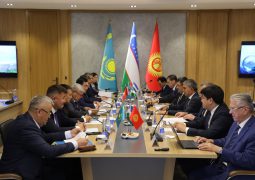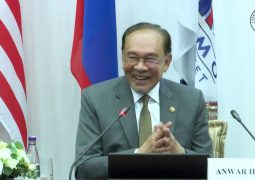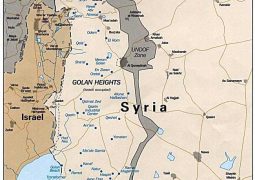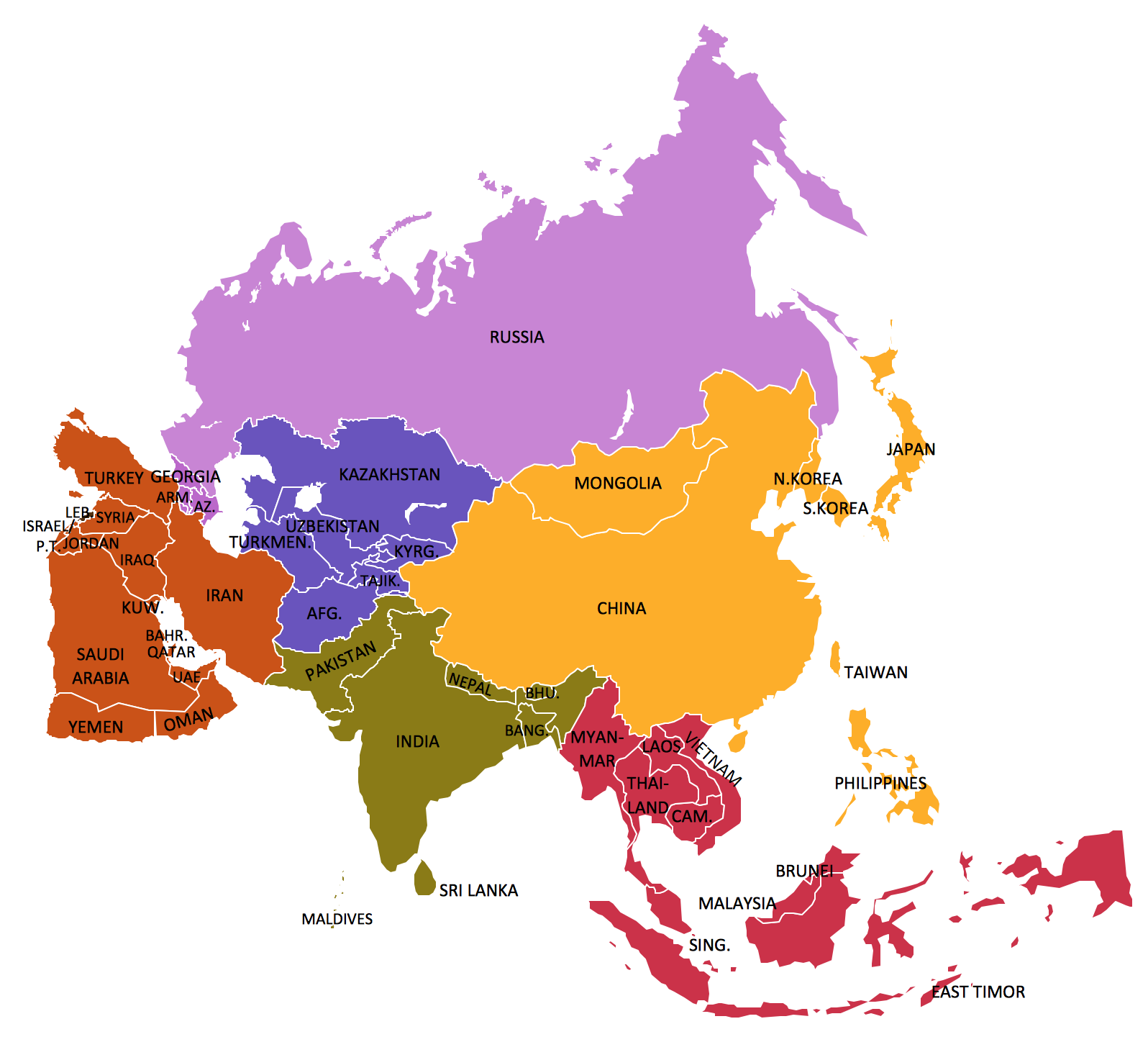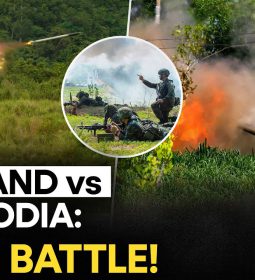Pro-Moscow military bloc – CSTO Signs New Security Roadmap in Bishkek


Image: TCA, Aleksandr Potolitsyn
The Collective Security Treaty Organization (CSTO) reaffirmed its commitment to regional security and political coordination during its annual summit in Bishkek, Kyrgyzstan, on November 27. Leaders from five of the bloc’s six members – Russia, Belarus, Kazakhstan, Kyrgyzstan, and Tajikistan – attended the event and signed off on a series of military, security, and strategic cooperation agreements.
Armenia, the sixth CSTO member, boycotted the summit for the second year running, continuing its protest against the alliance’s refusal to intervene during Armenia’s conflict with Azerbaijan, and marking another low in Armenia’s engagement with the CSTO after months of public grievances against the bloc. Despite Yerevan’s absence, the other members adopted a wide-ranging joint declaration reaffirming the alliance’s collective defense commitments and outlining new initiatives to modernize its security framework. Notably, Armenia did not oppose the adoption of the summit documents in its absence.
The CSTO, founded in 2002 and led by Russia, has a charter that guarantees mutual defense among members, though the bloc has often struggled to act decisively during regional crises. Still, it remains the only formal security alliance connecting Russia with post-Soviet Central Asian republics.
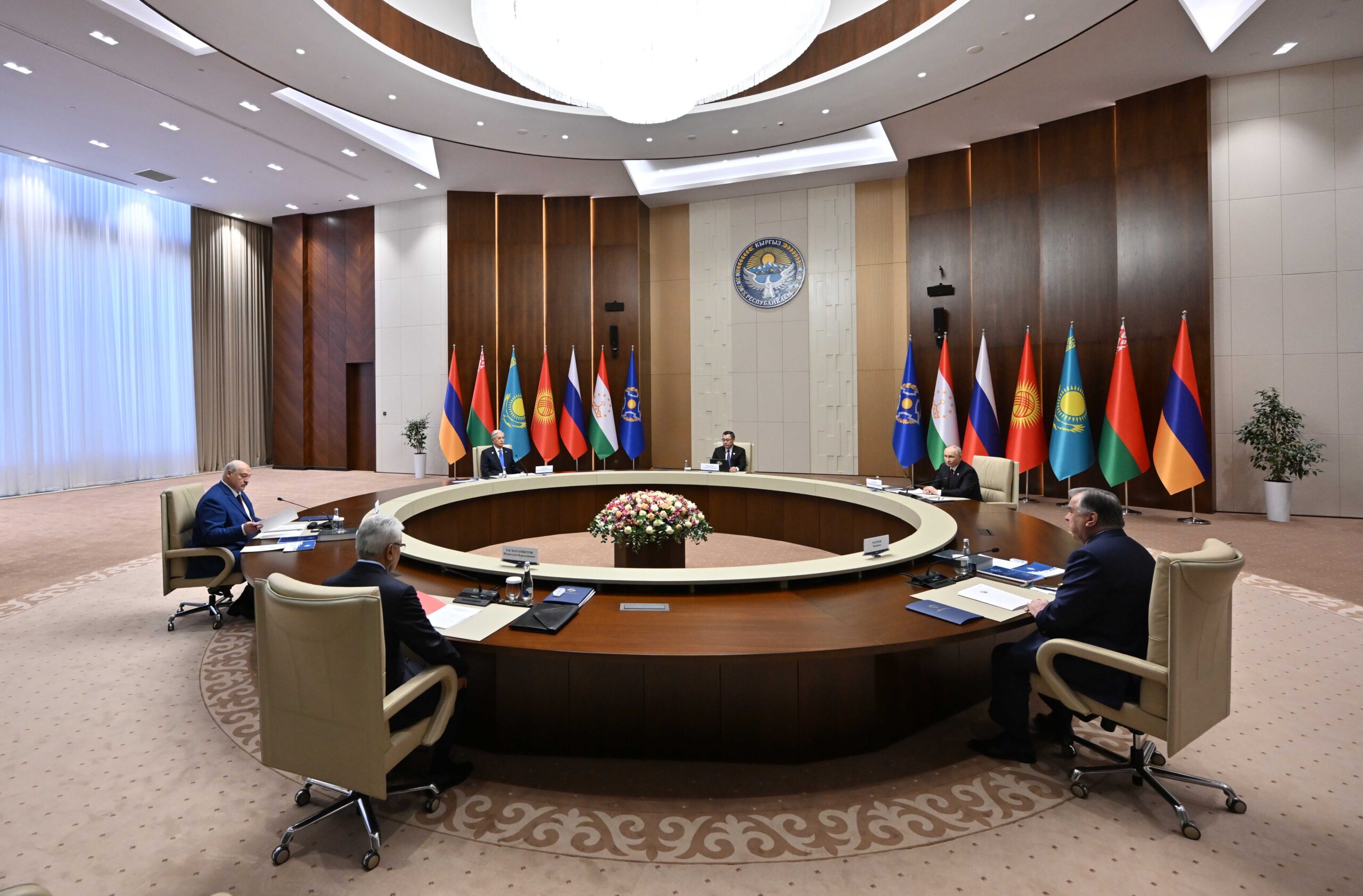
Kyrgyz President Sadyr Japarov hosted the summit, marking the end of his country’s chairmanship. Japarov handed over the role to Russian President Vladimir Putin, who announced that Russia will lead the CSTO in 2026 under the motto “Collective Security in a Multipolar World: Common Goal—Shared Responsibility.” The bloc also appointed Kyrgyzstan’s Taalatbek Masadykov as the next Secretary General. The former deputy head of Kyrgyzstan’s Security Council will begin his three-year term on January 1, 2026.
In remarks during the summit, Putin also addressed global concerns about the war in Ukraine, stating that a 28-point peace plan proposed by former U.S. President Donald Trump could serve as a “basis for future agreements.” He added that Russia has no intention of attacking Europe, seeking to dispel fears of escalation while reaffirming Moscow’s security agenda.
The summit ended with the adoption of a large number of documents. Among them were a strategy to combat drug trafficking and plans to improve border security, peacekeeping readiness, and anti-terrorism efforts.
Russia used the summit to offer CSTO members a rearmament initiative. Putin proposed supplying allies with modern Russian-made weapons that had “proven their effectiveness” in recent conflicts. The offer included expanded cooperation in joint production and training. Military exercises will continue under the newly adopted five-year cooperation plan. In 2025, the CSTO held drills in Kyrgyzstan, Belarus, and Tajikistan under the banner “Indestructible Brotherhood.” The plan outlines regular future training, integration of air defense units, and enhancements to peacekeeping logistics.

The alliance also adopted an Anti-Drug Strategy for 2026–2030 and signed a joint resolution to intensify Operation “Kanal,” which targets drug routes through Central Asia. The CSTO committed to upgrading its counterterrorism strategy and enhancing cyber defense capabilities, with Russia proposing broader coordination on information security and biosecurity.
Tajik President Emomali Rahmon, meanwhile, used the summit to urge partners to accelerate border security aid along Tajikistan’s porous southern frontier with Afghanistan.
For Central Asia, the summit’s decisions carry immediate implications. Tajikistan, Kyrgyzstan, and Kazakhstan each face different internal and border-related challenges, but all benefit from continued defense integration and training. The CSTO’s reaffirmation of its mutual defense clause—Article 4—signals continued political support for Central Asian states concerned about terrorism, cross-border infiltration, and drug trafficking.
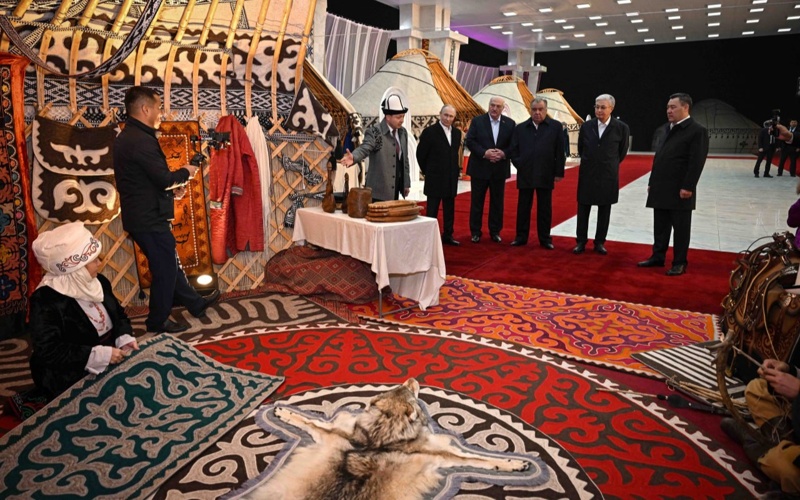
Kazakhstan, a founding member, remains one of the bloc’s most engaged contributors. In January 2022, the country invoked CSTO support to quell mass unrest. The rapid deployment of CSTO peacekeepers helped stabilize the situation, marking the bloc’s first internal intervention.
Kyrgyzstan concluded its 2025 CSTO chairmanship with praise from allies. President Japarov stated that all planned objectives – security coordination, crisis simulations, and high-level military planning – were completed. The appointment of Masadykov as Secretary General reinforces the country’s diplomatic standing within the bloc.
The CSTO also emphasized building deeper ties with the Shanghai Cooperation Organization and the Commonwealth of Independent States. That move suggests a shift toward broader regional coordination, especially on narcotics control, training, and digital security.
However, not all signs pointed to harmony. Armenia’s refusal to attend reflected growing disillusionment with the CSTO’s crisis response track record. Yerevan has criticized the alliance for failing to intervene during border clashes with Azerbaijan, and has explored alternative partnerships with the European Union and NATO members.
The CSTO’s remaining members appeared content to move forward despite the rift. Russia’s incoming chairmanship suggests the bloc will continue expanding its military agenda while integrating security issues such as migration and cybersecurity. Moscow also appears committed to keeping the CSTO as a platform for safeguarding its faltering influence in the region.
Though many of the new plans extend through 2030, offering continuity for training, modernization, and joint exercises, whether the bloc’s goals materialize will depend on funding, logistics, and political will. For its Central Asian members, the CSTO remains a buffer against regional instability, especially given Afghanistan’s uncertain trajectory and persistent economic fragility in border provinces.
In practice, the CSTO’s value continues to lie in its deterrent role, its ability to stage rapid-response drills, and its political symbolism. As the Bishkek summit showed, the bloc still commands consensus among most of its members, even if that consensus is built on uneven capacities and shifting alliances.
- Previous Europe’s ‘unthinkable’ options on Russian threats: 1815 or 1945 – you choose, Russians say
- Next SE Asia cyclone hits Malaysia too: Flood victims across nine states down, 27,522 remain in PPS



